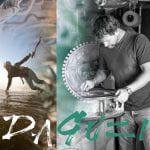A study of dimensional deception and delayed success.
Chris Gutzeit has been enamored with art from as early as he can remember. A waterman by paternal influence, Gutzeit grew up on Oahu under the soulful magnetism of an environmentally aware mother. Gutzeit talks with traces of island pidgin in a soft, laid back surfer’s drawl, his disposition generally warm while lacing much of what he says with an entertaining patina of sarcasm.
Gutzeit’s art career may have gotten an early start, but his relationship with commercial success has been a story of ebb and flow. For the last 10 years Gutzeit has narrowed his creative efforts to exquisite glass portals he calls “The Art of Satori.” Through the use of an infinite mirror aesthetic, strategic placement of ocean inspired objects and lighting, the Satori collection creates a gravitational pull into a dazzling inner world of reflective tranquility.
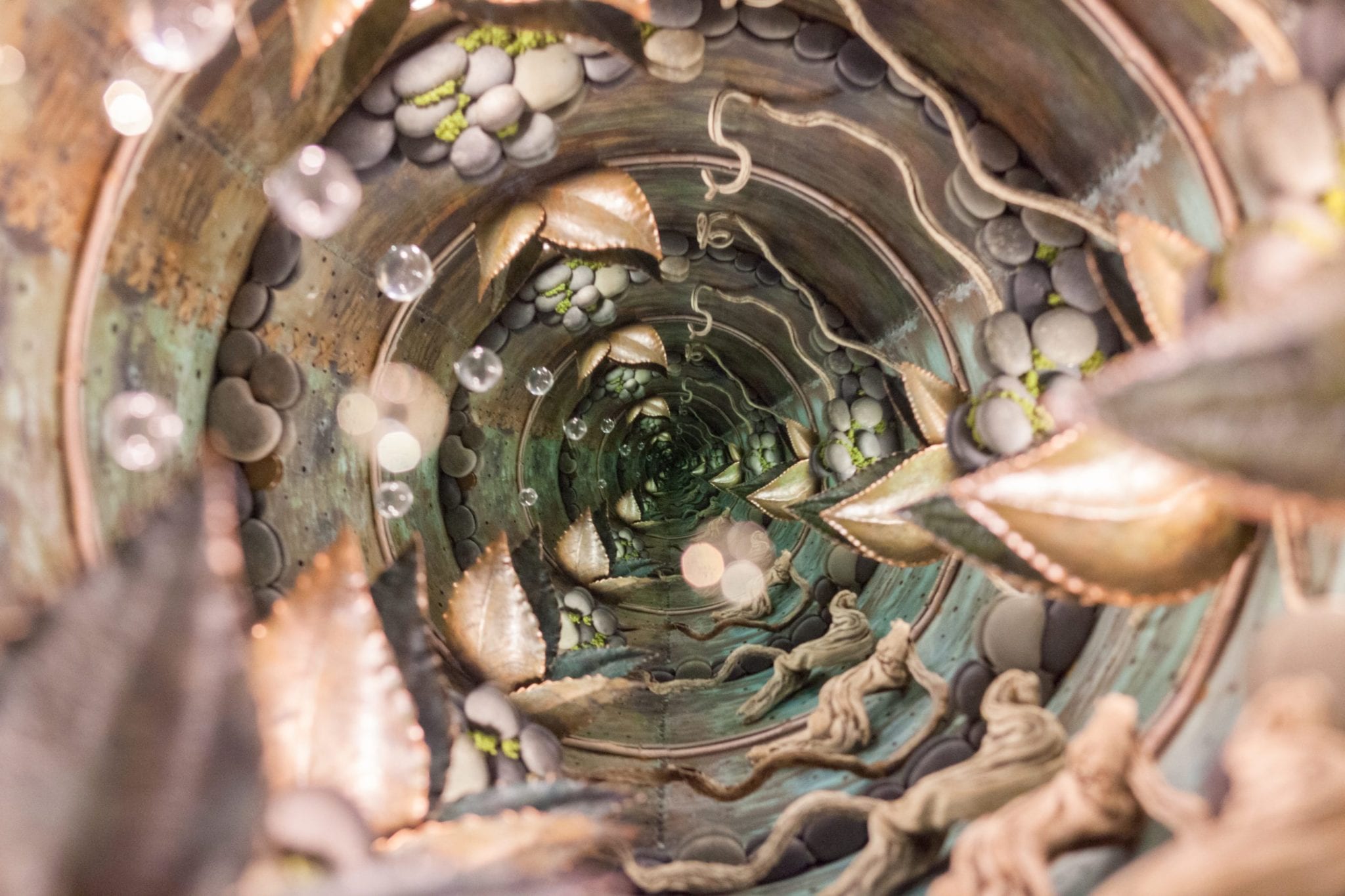
I wanted to call this style of art “The Art of Satori.” Satori is a Japanese word that represents the spiritual goal of Zen Buddhism: to obtain sudden enlightenment and a state of consciousness by intuitive illumination. The goal with these portals is to create an evocative, luminescent composition of light and color. I try to draw the viewer into a spiraling progression of jewel-like depth and a deep, sea-like stillness. I’m frequently evoking themes of the ocean, patterns in nature, mandalas, and the play of space and time.
Gutzeit’s obsession with art grew from a fascination with his uncle on his mother’s side, a combat artist in Vietnam who specialized in watercolor and architecture. He remembers visiting his uncle in Santa Barbara, painting fire trucks and thinking how he dreamed of making art for a living. Of his high school years, Gutzeit reflects, “you tend to gravitate towards the classes that you are good at and so I immersed myself in art.” During this timeframe he sold his first piece, colored pencil on construction paper, to a local college art professor. Pocketing the $150, his eyes opened with revelation; “hey, you can make money at this ”” that’s cool.”
Nabbing himself an art scholarship to Brigham Young University on Oahu’s North Shore only to drop out during his second year, for Guzeit, learning about his chosen profession was getting in the way of actually making art. School seemed more a quest for the credentials best suited for teaching art rather than creating it. Gutzeit took a step sideways and joined a friend who had recently opened a gallery.
Gutzeit’s early path is a great example of how our professional and creative lives are shaped by the people we meet, our preconception of the world, and life events that exert directional force upon us. Free from college, Gutzeit followed a girlfriend to Europe to experience the world beyond Hawaii. Months later, he landed in Santa Barbara with the charge of caring for his aging grandparents. When they passed, he stayed and became entrenched in the beginning of the Santa Barbara kitesurfing scene alongside pioneers like Peter Trow and Corky Cullen.
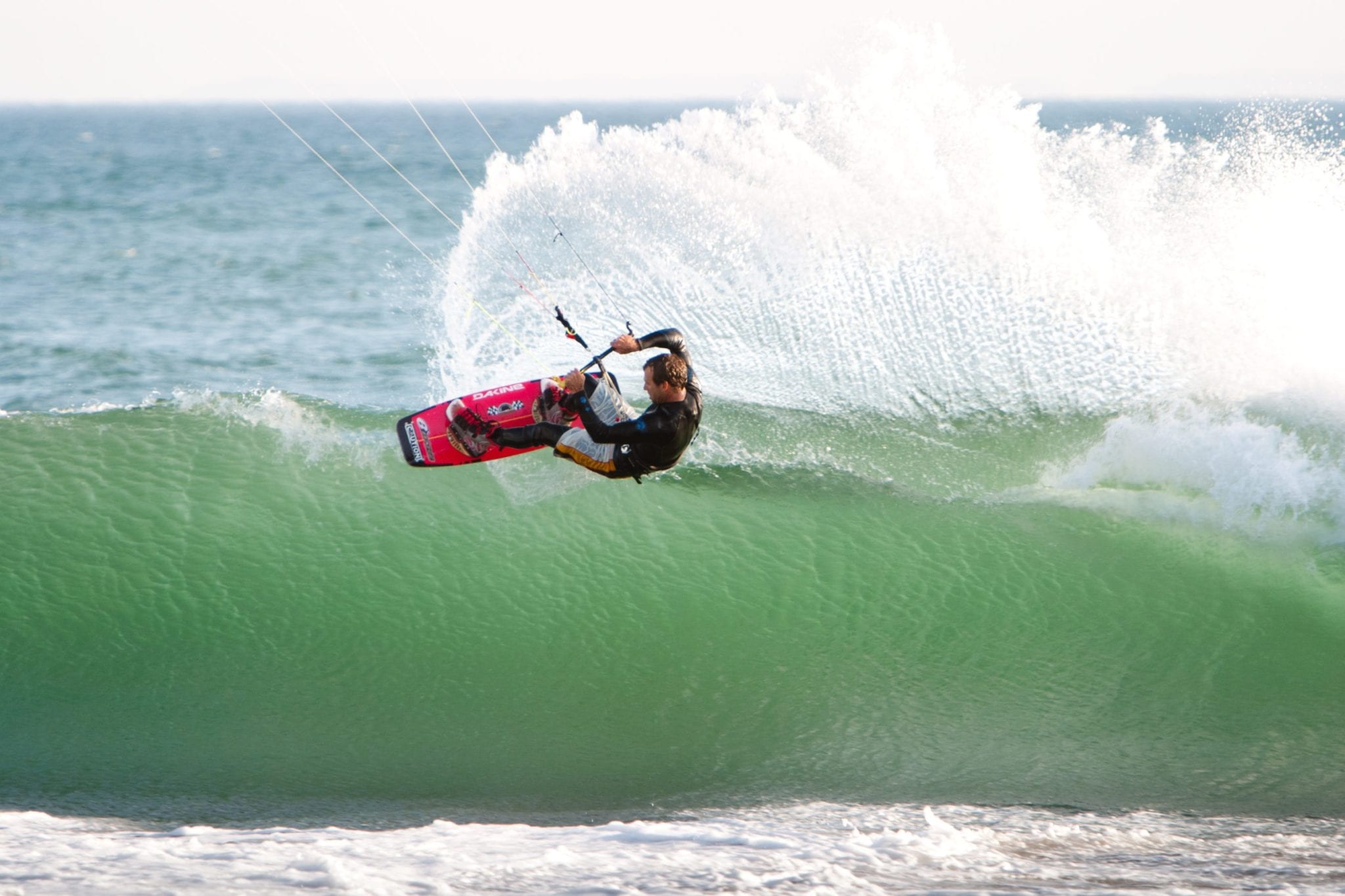
It seems strange trying to explain to the new guy why twin tips were once the desired tool for kitesurfing waves. This gouging floater with boots and a straight rail suggests an era when equipment’s main function was to resist the pull of the kite. // Photo Jason Wolcott
It was around then that Gutzeit’s art shifted from bronze sculpture and drawing to a new three dimensional medium. A friend introduced the idea of making art with reflection and Gutzeit quickly started experimenting with his own version of the infinite mirror. This uncharted medium required an entirely new set of tools and knowledge base, like working through the kinks of heat and condensation that accompany installations of light and electricity in a closed environment.
Gutzeit recalls the first art show where he released his first Satori works to the world. It was the early aughts in a restaurant gallery in Santa Barbara. Most of the other artists listed their work under $500, but Gutzeit’s giant 4-foot by 5-foot light sculpture was listed for $5000. When it didn’t sell, the gallery owner scoffed at Gutzeit’s price tag. With the lights and materials costing more than $500, Gutzeit laughed and told the guy he was obviously in the wrong show, and walked off knowing his work was worth more than the sum of its nuts and bolts.
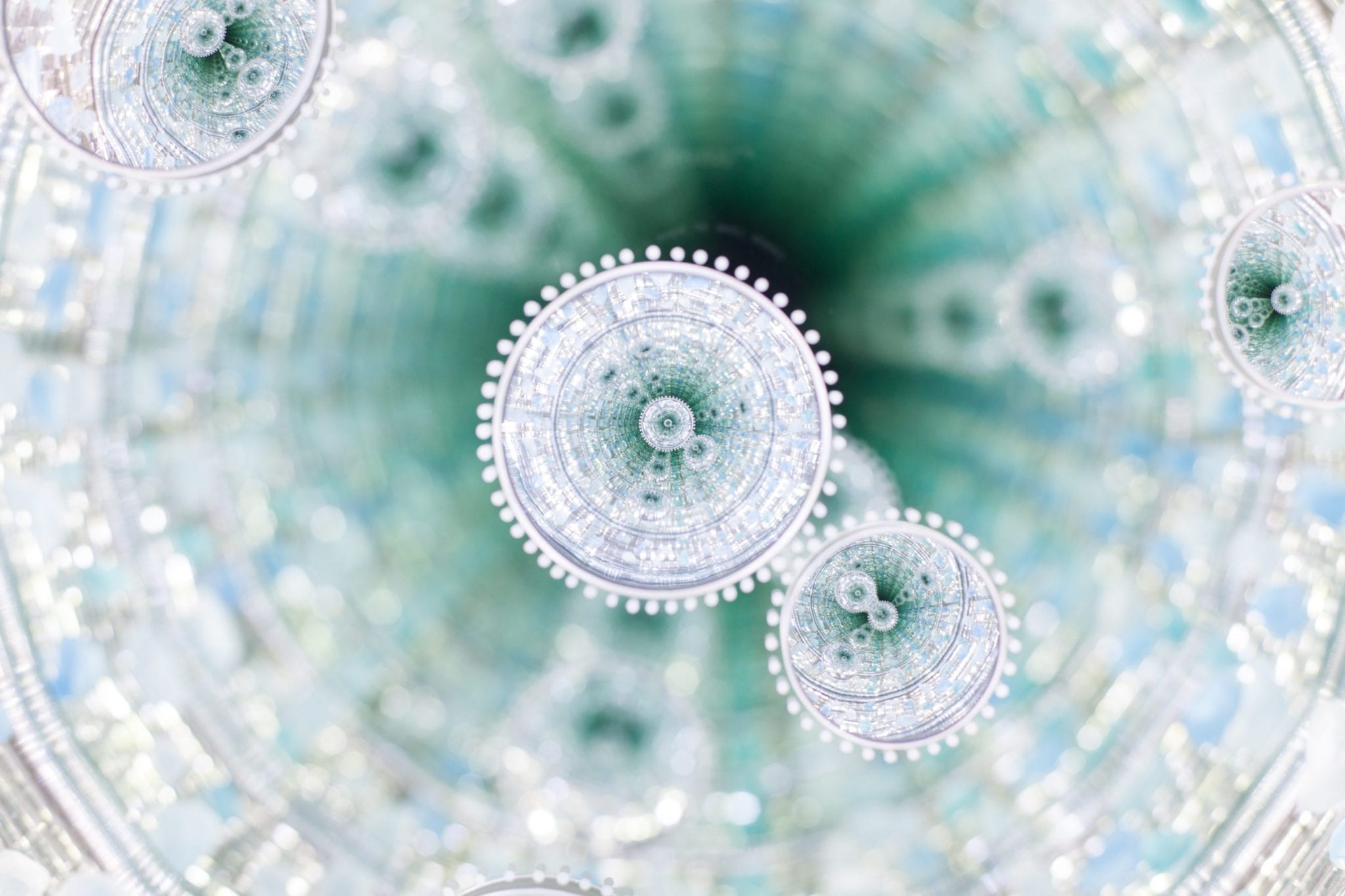
The goal with each of these works is to stimulate a world of meaning and emotions, stirring parallels and conjuring interpretations that belong to the eye of each viewer. There’s a duality to these portals; I’ve designed each piece as an exquisite sculpture to be viewed by daylight, but by night, the internal lighting then transforms the art into a stunning jewel of light.
Eventually, an art agent in Hawaii set up a meeting with Bill Wyland, an influential member of the Hawaii art world. Bill Wyland made his fortune building galleries for the renowned marine mammal murals painted by his brother Robert Wyland. Bill Wyland hadn’t seen anything like Gutzeit’s infinite mirrors and promptly purchased one to adorn his house. Gutzeit recalls how Bill would laugh as his guests passed up million-dollar artwork to stare into Gutzeit’s captivating visual abstractions.
With the threat of success always lurking around the corner, Gutzeit continued to evolve his designs. Jack Johnson had one of Gutzeit’s portals in his personal music studio and a famous sitcom producer had one on the mantle of his million-dollar Malibu beach house, yet Gutzeit wasn’t making a living from this notoriety. If Gutzeit’s following seemed to be building towards tangible results, by 2008 his momentum was all but dead. When the recession hit no one was buying anything and Gutzeit was forced to quit art altogether. Using his standup surfing contacts he got a job managing Blueline Surf Shop. From behind the counter, Gutzeit met his current business partner with whom, in the height of the standup surfing craze, he’d eventually start a carbon paddle company.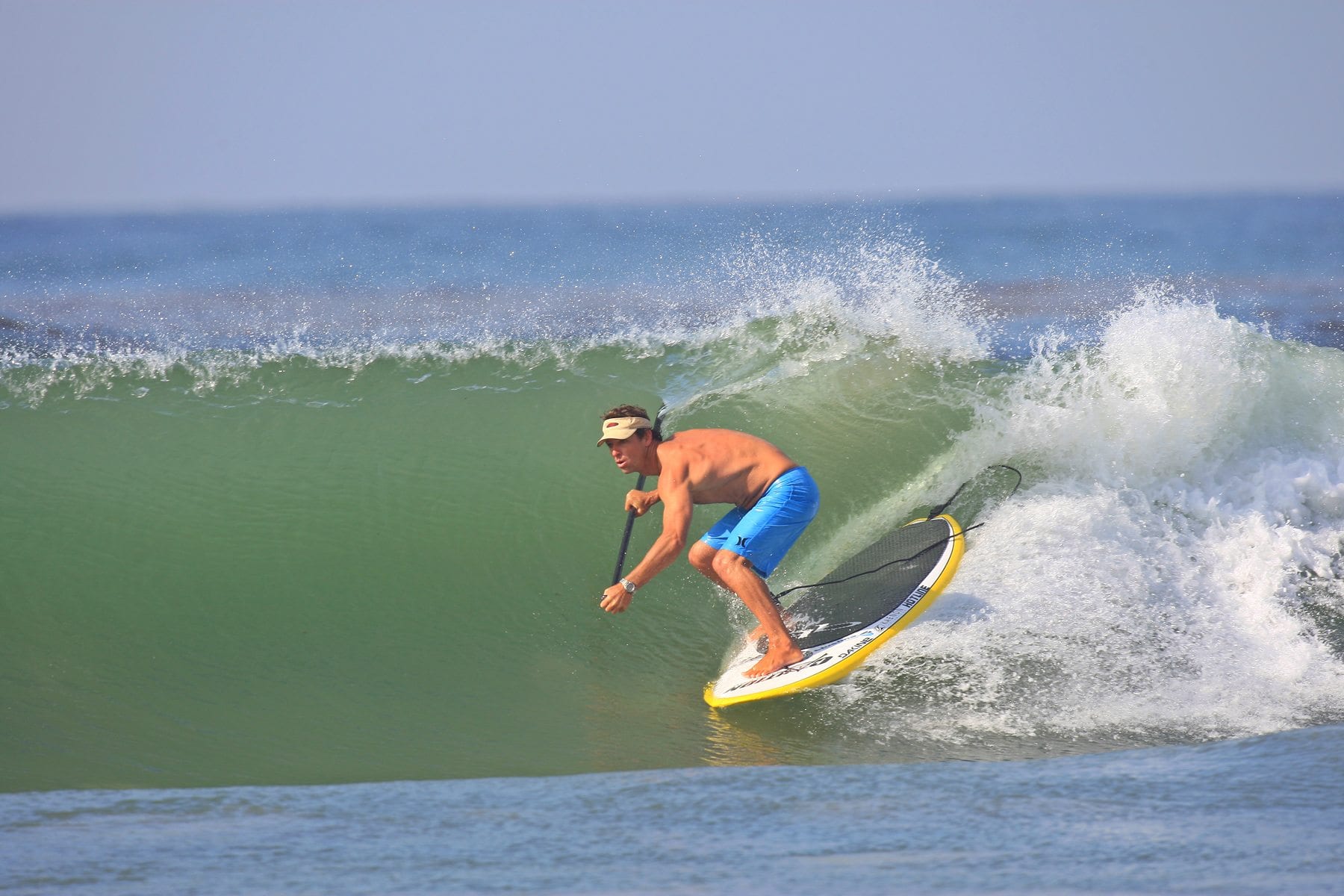 Working in the SUP accessory market, Gutzeit came up with the concept of training wheels to make smaller SUP boards steady for beginners. By dissecting kite struts and duck taping them to the sides of a smaller SUP board, he turned a 28 inch wide board into a 34 inch wide platform for a one size fits all solution. The final product was called Training Rails and sold with some success but according to Gutzeit, “Most surf shops would rather sell two boards instead of a single board with a one size fits all accessory.”
Working in the SUP accessory market, Gutzeit came up with the concept of training wheels to make smaller SUP boards steady for beginners. By dissecting kite struts and duck taping them to the sides of a smaller SUP board, he turned a 28 inch wide board into a 34 inch wide platform for a one size fits all solution. The final product was called Training Rails and sold with some success but according to Gutzeit, “Most surf shops would rather sell two boards instead of a single board with a one size fits all accessory.”
Yet, with a steady trade in carbon paddles, the company Gutzeit named Carbonerro, hummed along. With Gutzeit’s art ambitions all but dead, in 2014 he received a Facebook message from his old friend Bill Wyland. Having recently sold his Hawaii house to one of the pioneers of Google who required Gutzeit’s art piece remain with the house, Bill was opening a gallery in Hawaii and insisted on having infinite mirrors to show.
From a bungalow above Santa Barbara’s cliffs in a guest house he takes care of for a kitesurfing friend whose long since taken up residence in Capetown, Gutzeit laughs at the ironic fluctuation in value of his art. “Some of this stuff I made years ago ”” take my Buddha piece ”” it was sitting in my garage for eight years covered in rat shit and termite droppings. Now it’s all cleaned up and hanging in someone’s house as an expensive work of art.”
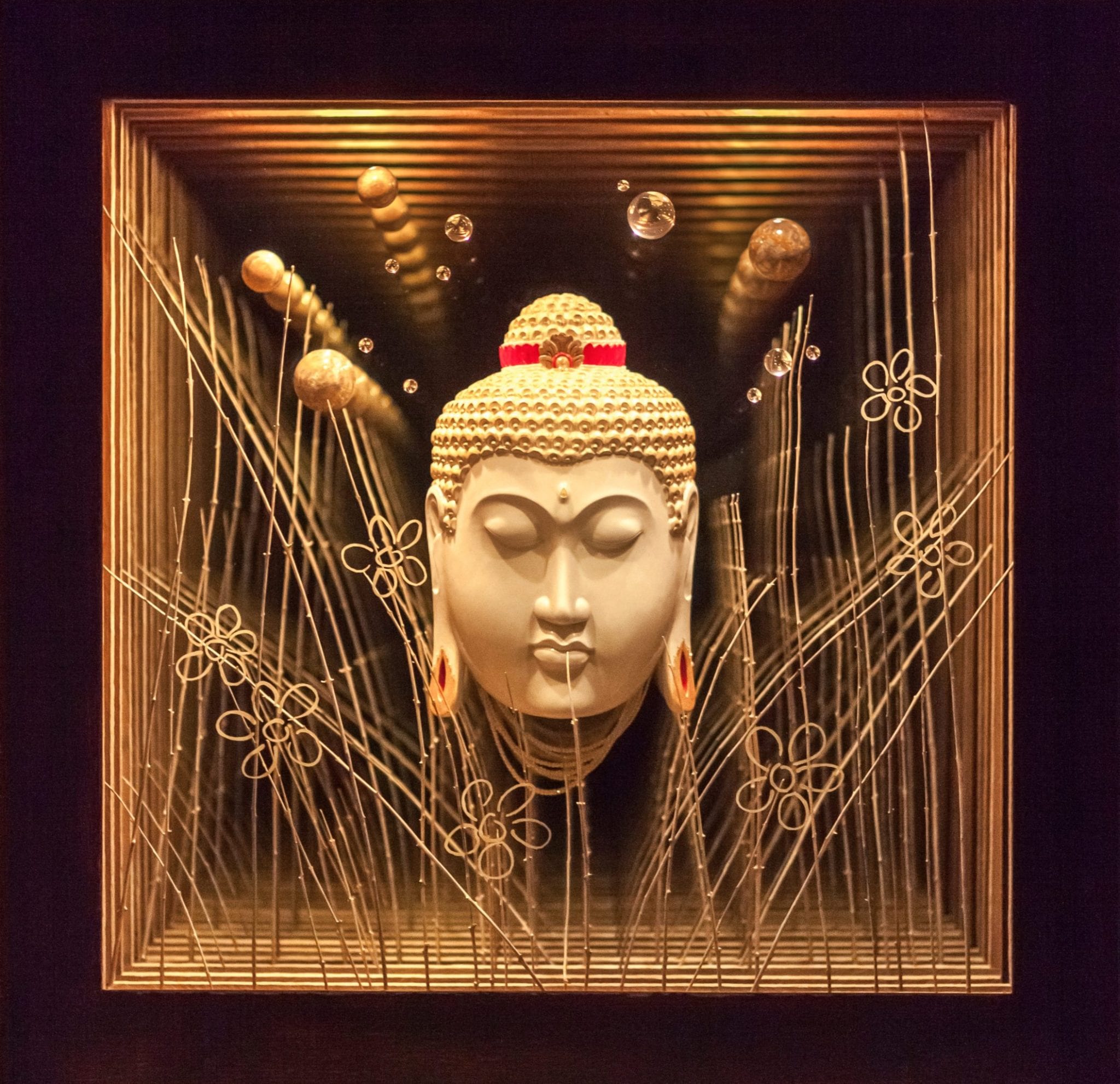 In some ways, the dormant period has helped mature the aesthetics of Gutzeit’s work. His early art pieces started with iconic subjects like the Bull’s Head and Buddha Mask, where the composition was conceived around a theme or idea and the central subject was prominently centered in the piece. With time, the works have become circular and more abstract. Influenced by materials he finds on the beach, these items create an engaging visual and emotional aesthetic that can enhance any living situation. Gutzeit talks about developing new lighting techniques as well as shifting the way he places objects within the figurative canvas of the portal.
In some ways, the dormant period has helped mature the aesthetics of Gutzeit’s work. His early art pieces started with iconic subjects like the Bull’s Head and Buddha Mask, where the composition was conceived around a theme or idea and the central subject was prominently centered in the piece. With time, the works have become circular and more abstract. Influenced by materials he finds on the beach, these items create an engaging visual and emotional aesthetic that can enhance any living situation. Gutzeit talks about developing new lighting techniques as well as shifting the way he places objects within the figurative canvas of the portal.
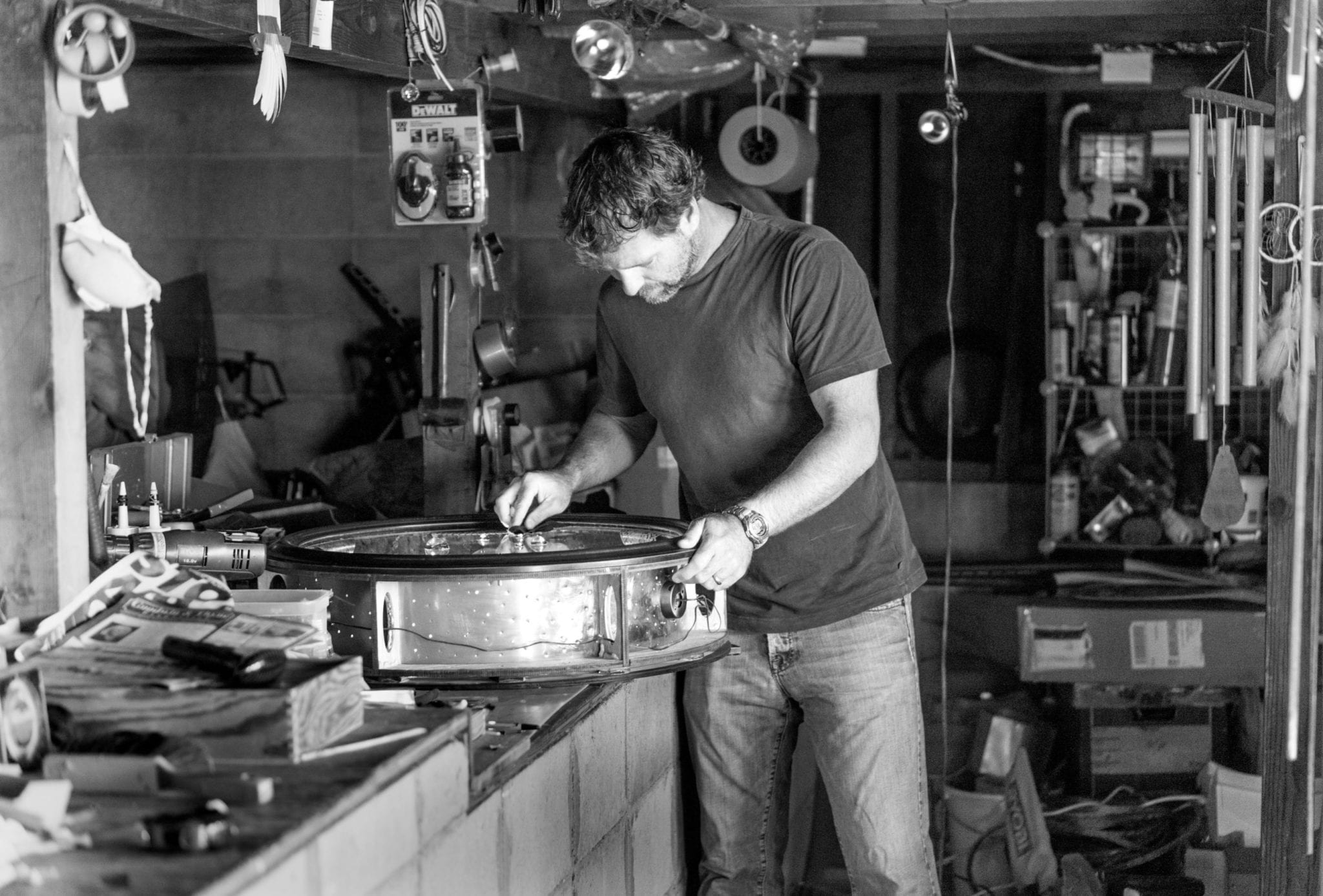
The biggest challenge I face when creating these portals is coming up with something new. I’m never satisfied with my work. I always try to redefine my thoughts, my approach and my technique. This can be incredibly tedious and time consuming at times. Often assembling and reassembling each piece over and over again, I find myself staring off into the inner space within my work, looking for direction of what it wants to be. Sometimes this goes on for days. It’s like I’m waiting for the piece to talk to me, to tell me where it needs to go. // Photo Christy Schuler
When asked how kitesurfing has played a role in his art, Gutzeit reflects on how the time he spends in the ocean environment has yielded both inspiration as well as recycled materials that work themselves into his work. In some ways, the infinite pipe is analogous to the tapering energy of the waves Gutzeit’s has spent his life chasing. He admits, “I’ve been playing my whole life, I’m not going to stop now. Kiting is a good balance along with standup surfing, except since I started foilboarding, it’s been hard to find enough time for my art.” Gutzeit isn’t apologetic for the privilege of waking up, walking a couple feet to his studio and disappearing into a creative abyss. “Once I have direction on a piece, I can’t stop. It’s like foiling; it’s incredibly addictive.” He remarks how foiling takes him back to his kitesurfing origins; “15 years later I can run into Peter Trow on the weekend at Ledbetter and it’s flat, it’s blowing 10 knots or something, but we’re drag racing Ian and Earl Alldrege, trying to figure out the future of this foil technology.”
Looking around Gutzeit’s house, his art is conspicuously absent except for his latest masterpiece floating on the screensaver of an oversized iMac. Gutzeit claims he enjoys the process, but when he’s done, his wife photographs them and they “fly away.” Part of this is because the immense time required to create each Satori portal makes it difficult to keep up with gallery orders, yet by the time one is finished, Gutzeit is already inspired by where he wants to go with the next piece.
In the studio besides his house, Gutzeit tells the story of an ill-fated experiment with propane gas and a ring of fire when his phone rings. Rob Schrader, an old kitesurfing friend who’s infiltrated the east coast art scene is on the other end. There’s talk of Gutzeit slipping into some high-end galleries in New York’s meatpacking district, but like always, mainstream success for his Satori project is lingering just around the next corner, lurking within each portal’s ephemeral sanctuary of infinite time and space.
This article was first featured in Tkb’s Winter 2015 issue. Want more like this? Subscribe here: https://www.thekiteboarder.com/product/magazine-subscription/


